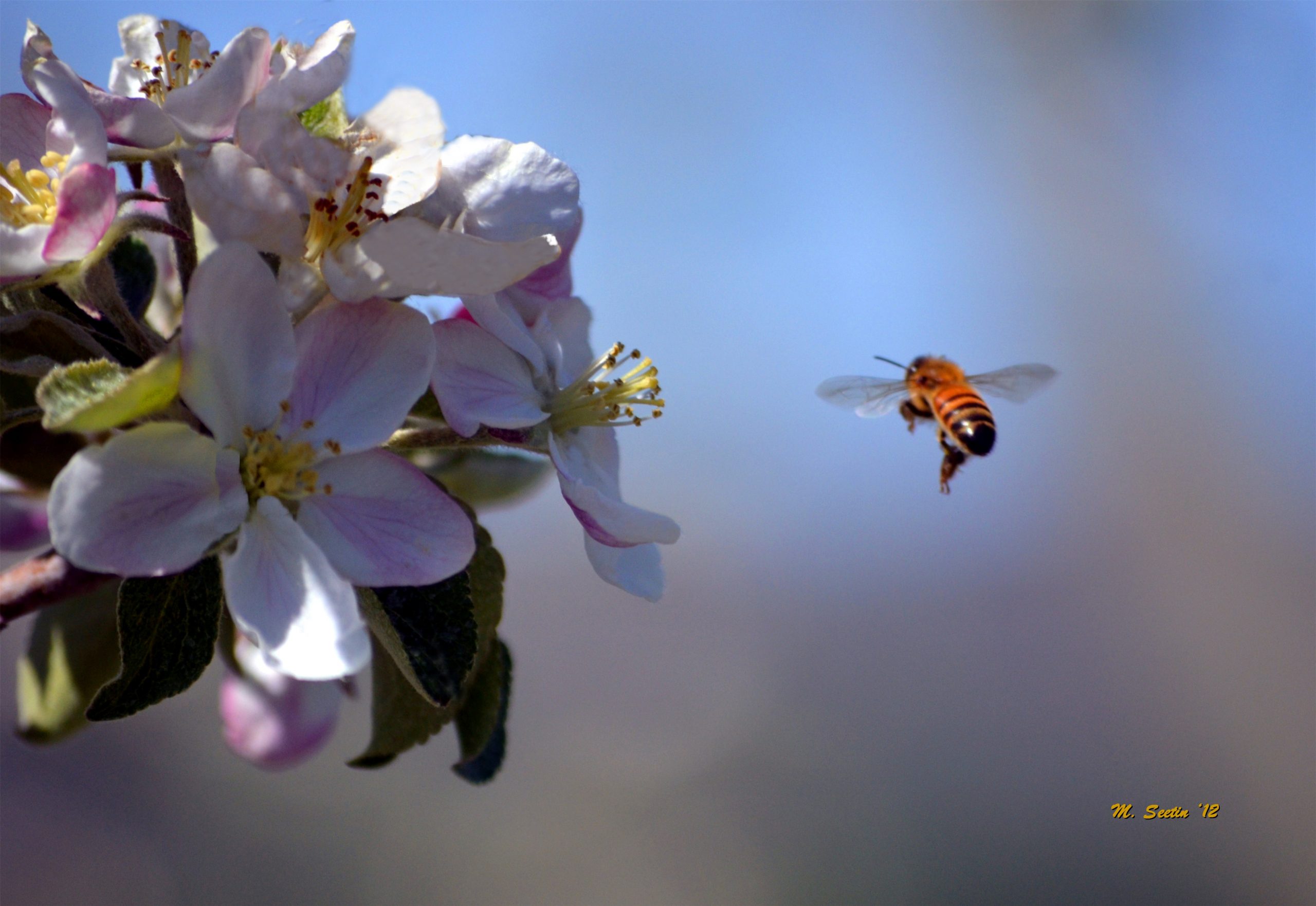Let’s give it up for the bees!
It’s that time of year again. Bees are hard at work pollinating the nation’s 295,000 acres of apple orchards, including USApple’s mini orchard on the National Mall in Washington, D.C. It’s in full bloom this week. It takes a lot of busy bees to pollinate the blossoms on all those trees and produce more than 27 billion apples every year (that’s enough to circle the Earth 41 times!).
Each flower is a potential apple if pollinated. So, in that cluster of five flowers (the king is in the middle) there is the potential for five apples. Most apples are self-sterile, meaning unlike many major crops, they cannot pollinate themselves. That’s why bees and other pollinators are necessary. (Thank you pollinators!) The Golden Delicious variety is one that is self-fertile, but it still benefits from insect pollination. Think about the short window when apple trees are in bloom. There are hundreds of blossoms on a mature tree, all waiting to be visited by a bee. And up to tens of thousands of trees in the orchard. So, there is a good reason for the maxim ‘Busy as a bee.’
In a commercial orchard, the grower would like to keep only one or two of the five apples in each cluster to assure that the apple gets all the ‘food’ it needs from the tree to grow to the ideal size. That’s what you have heard of as ‘thinning’ – removing all but one apple or so per cluster so that the remaining apple will grow to a larger size. If you left all of them the tree would equally allocate resources (water, nutrients, energy from the sun) and they’d stay too small.
Apple trees as we grow them consist of two separate plants – the root or ‘rootstock’ and the tree, or ‘scion’ that is grafted onto the rootstock to make the complete apple tree. That tree is considered the ‘mother.’ And since the apple tree is the mother, it oversees the apple growth and development, and it will produce a ‘true to type’ apple. Which means if the apple tree is the variety Honeycrisp, it will produce only Honeycrisp fruit.
That is, fertilization will not change the fruit. It will change the genetic code of the seeds inside the Honeycrisp apple. Pollen ‘male’ from other apples or crabapples will create fertilization. Each apple’s genetics are 50 percent mother and 50 percent male.
Every apple holds 10 seeds. If you take those 10 seeds from one apple and plant them – and assuming all are pollinated – you could have 10 different apple trees, but all the same mother. If you take the beginning cluster of five flowers and multiply it by 10 seeds each you could theoretically have 50 different apple trees. You can see how over the millennia Mother Nature has created thousands of varieties of apples. In fact, the research orchard at Cornell University has more than 7,000 varieties!
So, thank you to the bees for making it all possible!

